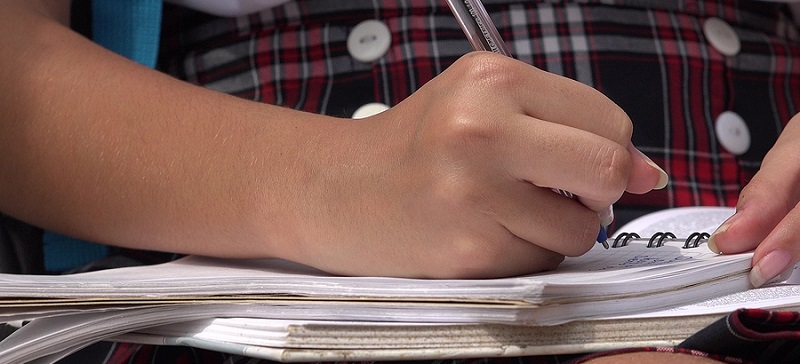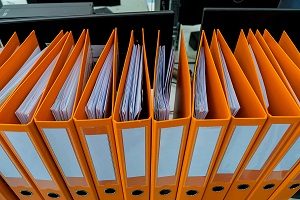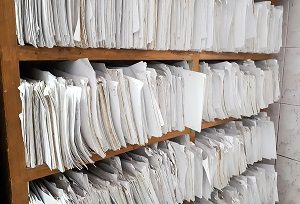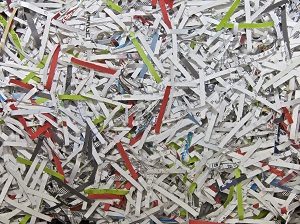
When it comes to student-related records it’s state laws that define how long they need to be kept, making it difficult to lay out an all-encompassing retention guide for each and every type of student record.
Instead, learn more in this video or the transcription below about guidelines on how to create a plan for handling student record retention in compliance with any state’s requirements, with information including general retention times for different records as well as the best ways to actually store and track files before disposing them.
Video Transcription
Is It Required to Keep Student Records?
To try and keep things short and sweet, the answer is yes—and while federal law may not dictate specific retention times for student records, there are many state and local laws that do.
For just one example, there aren’t any federal laws that require a school to keep a student’s transcripts; however, many individual states actually require transcripts to be kept forever.
How to Keep Track of Student Record Retention Times
For the large part, retention times for student records are dictated by individual state laws, making it difficult if not impossible to give an exact time for how long to hold onto various records. As a result, many schools create a management system where all records are kept for the longest period required so they can avoid needing to regularly sort the different types of records.
One of the most common approaches is separating student records into two basic categories—permanent records and temporary records.
 Permanent Records
Permanent Records
- Basic Identifying Information
- Academic Transcripts
- Attendance Records
- Long-Term Suspensions
- Expulsions
- Health Records
Temporary Records
- Extracurricular Activities Information
- Disciplinary Information
- Health Information
- Psychological Evaluations
- Teacher Anecdotal Records
As the name implies, permanent records often have to be kept indefinitely; however, some states do set retention times ranging from 60 to 100 years.
The temporary record serves as a catchall for any other student information that doesn’t fall into the permanent records category. Schools may be required to keep such records for 3 to 6 years.
Store and Manage Student Records Digitally
Considering how one of the biggest issues for schools is finding space to store and retain some student records for over 50 years, the problem is even more serious for parents when it comes to keeping school documents at home where space is even more limited.
Serving as a perfect solution for space issues and other problems that come with paper, one alternative is scanning student records and handling them digitally so that parents can remove the need for paper altogether.
 The Benefits of Using Digital Student Records
The Benefits of Using Digital Student Records
Although by far the greatest benefit of using digital vs paper student records is the amount of space they can save, there are also other advantages to going paperless such as the ability to configure automatic retention tracking and quickly find records with various file search, sort, and filter tools.
Track Retention Automatically
When you store student records digitally you can typically configure a system for your chosen storage system to track retention times automatically, coming in especially handy for the temporary records with much shorter retention times.
Free Up Extra Space at Home
While with paper the number of records quickly builds up since there’s many that need to be kept permanently, scanning on the other hand saves a ton of space since the amount of digital records that can be saved on a tiny hard drive is exponentially larger than the number of papers you can stuff in cabinets and drawers around the room.
Easily Track Down Records When Needed
As the total number of paper student records increases it also becomes harder to find specific documents; however, when they’re stored digitally, they can be tracked down in a variety of ways since you can directly search for them by name, sort all records by date created or alphabetically, and create and organize records into new custom folders.
 The Student Records Scanning Process
The Student Records Scanning Process
1.You Collect School Records
Before any actual scanning begins the school records need to be organized and prepared first.
Extra prep-work typically will impact the final cost, for example, making it important you remove staples, paperclips, and various other document bindings before scanning.
2. Provider Comes to You to Collect Records
Next on the scheduled service date, the scanning providers come to your location to collect your materials.
The records are picked up and transported to a secure scanning facility where they will be converted to a digital format.
3. They Scan and Convert Records to Desired Format
Upon arrival at the facility, your materials are scanned and can be converted to one of many different file type options such as .pdf, .tiff, and .dwg for example.
Besides just the basic ability to be converted to various file formats after the scanning, other steps like OCR (optical character recognition and redaction can also be taken during the scanning to improve the usability of new digital files.
4. Your New Files Are Indexed & Organized
After the documents are scanned and converted to the desired format the next step is indexing and organizing them in an electronic document management system. There are two main options used for handling digital files:
- Cloud Storage SaaS License – Cloud storage works as a subscription-based SaaS (software as a service) option. Hosted in a central location, the software or applications can be accessed via a web browser and internet connection—allowing them to be used remotely.
Also since the hardware needed to operate the system is maintained by the service provider, no extra equipment like storage servers and the space required to store them is needed.
- DMS Software Perpetual License – DMS systems are similar to cloud storage, however, rather than SaaS-based pricing, DMS software is an upfront one-time investment. Also while there isn’t a service provider to manage the system like with cloud storage, a DMS offers greater capabilities in what the system can be configured to do.
 5. Old Copies Are Shredded & Recycled
5. Old Copies Are Shredded & Recycled
After the scanning and indexing process is finished the old physical copies of documents are shredded either with a heavy-duty industrial shredder at the facility or by a partner shredding provider.
Then following the shredding process and truly ending your paperless transition on a sustainable note, the leftover paper shreds are recycled and reused for new paper products in the future.
What’s Your Plan For Managing Student Records?
Join countless others who we’ve helped to develop a plan for how to efficiently store and manage student records in all formats when you visit us at Record Nations today.
To receive a free quote, fill out the form, use the live chat button, or give us a call at (866) 385-3706. You will receive personalized quotes from top professionals in your area.












